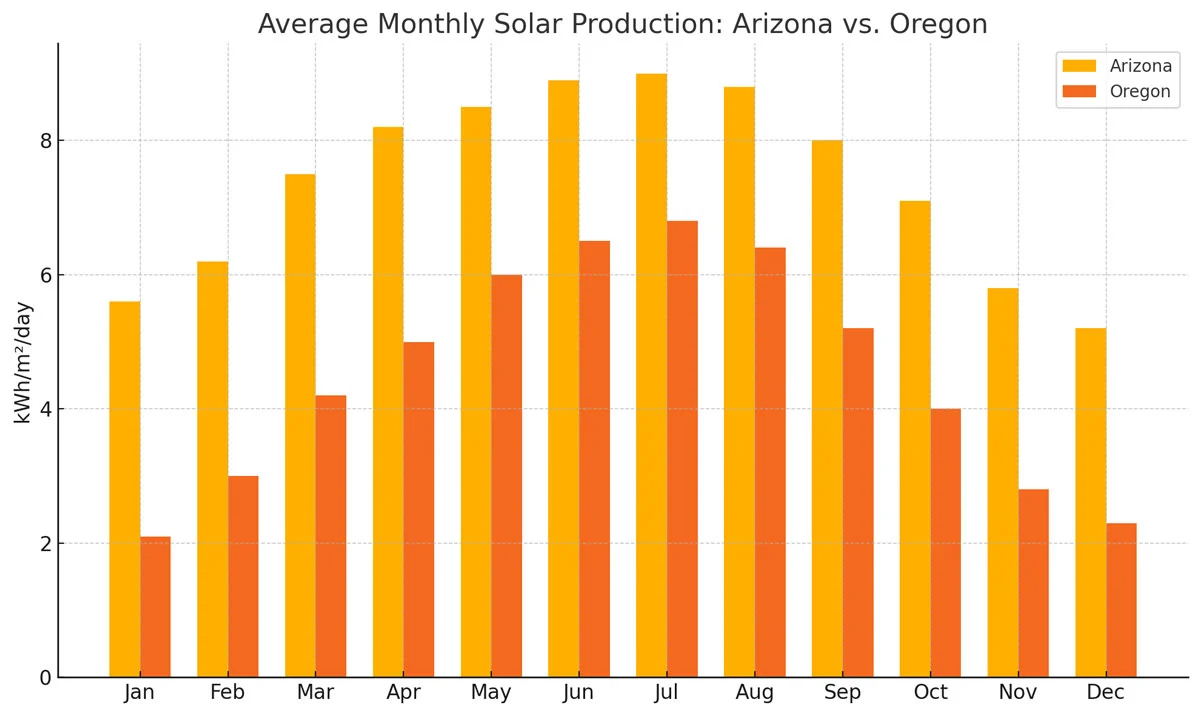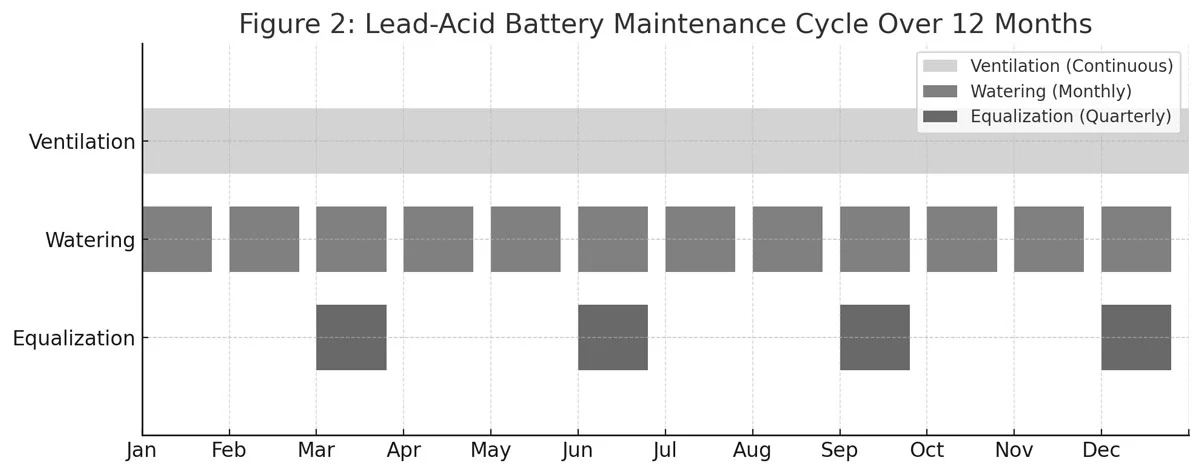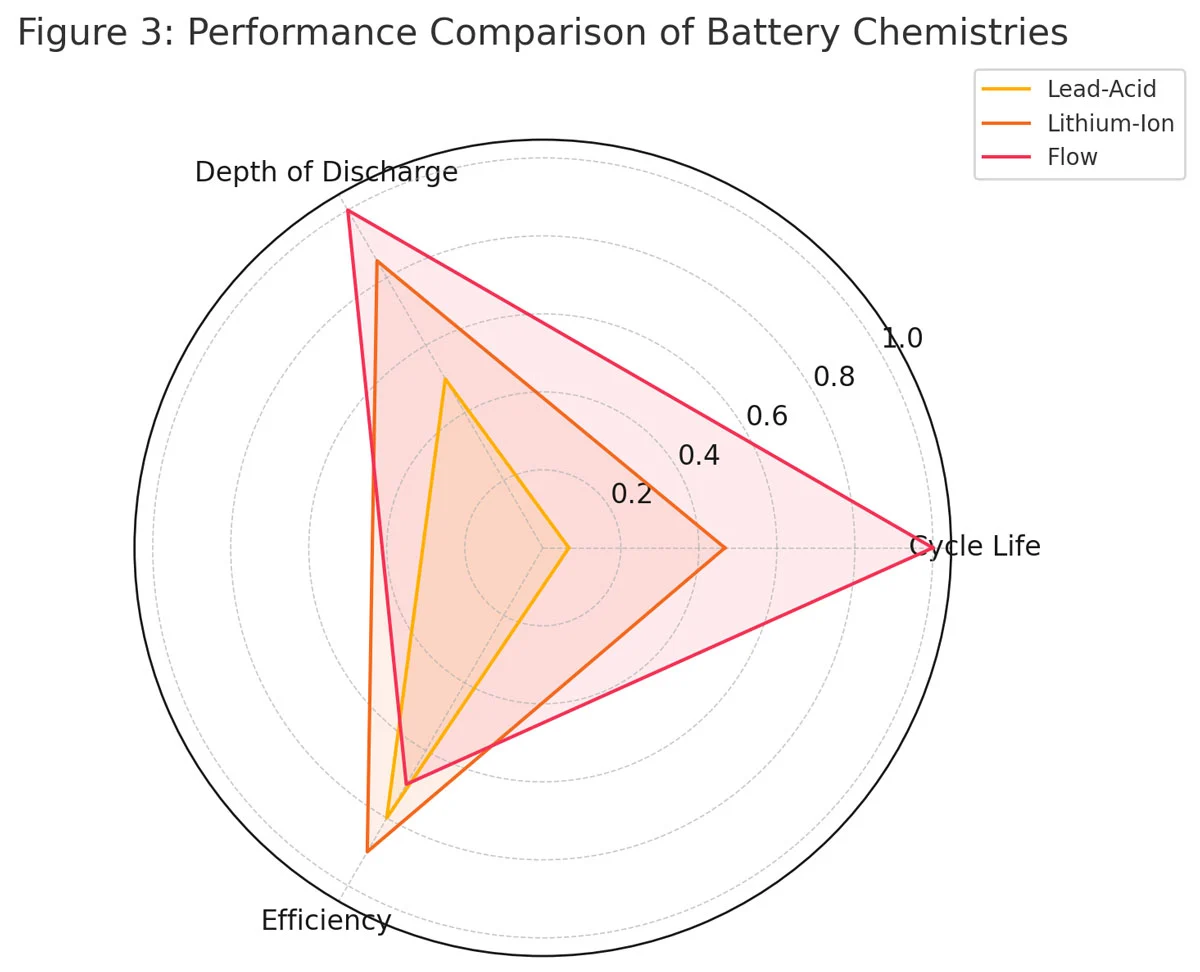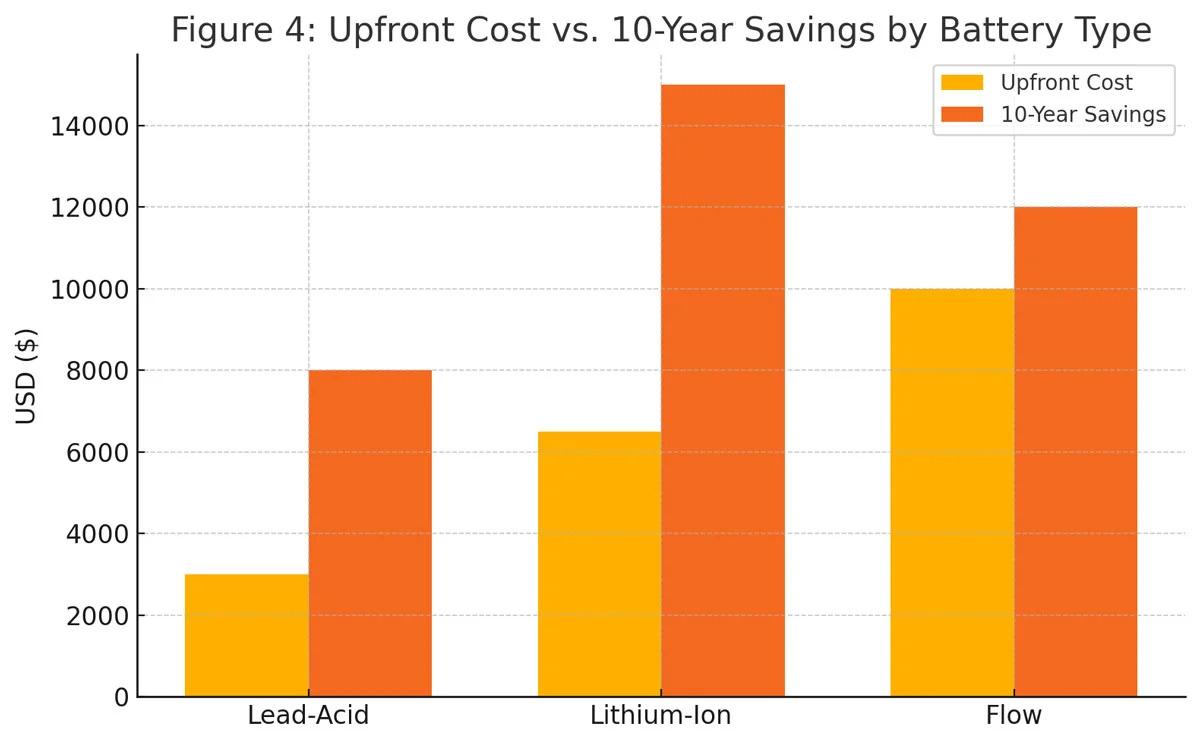Introduction
Designing the ideal solar power system with battery storage starts with more than just picking the cheapest battery you can find online. Whether you’re a homeowner aiming for energy independence or a business evaluating commercial and industrial energy storage system options, sizing and configuring your battery bank correctly is crucial. From calculating daily kilowatt-hour (kWh) needs to factoring in local weather patterns, each step influences performance, longevity, and return on investment. In this comprehensive guide, we’ll walk you through everything you need to know to size, select, and optimize a solar PV system with battery storage that fits your unique needs. We’ll reference top battery storage system companies like Cytech, explore various battery chemistries (lead-acid, lithium-ion, flow).This guide breaks down the nitty-gritty of how to calculate battery storage for solar system so you can harness the sun smartly and sustainably.
You wouldn't buy a backpack without knowing what you need to carry, right? The same goes for solar battery storage. Calculate too little, and you'll run out of juice when you need it most. Oversize it, and you’re wasting money on unused capacity. So let’s get into the meat of it and help you make the right call with confidence.
1. Understanding Your Energy Needs
Before diving into product specs and enclosures (like a Cytech NEMA 4 battery enclosure), start with a detailed energy audit. A solar panel battery storage system is only as good as its alignment with your actual consumption.
1.1 Gather Recent Electric Bills
Collect at least 12 months of utility statements to identify seasonal usage trends.
1.2 Break Down Loads Hourly
List every major appliance (HVAC, refrigerator, lighting, electronics) and estimate their wattage and run-time.
1.3 Identify Critical Loads
Decide which circuits must remain powered during an outage. Will you power only a backup refrigerator and lights, or your entire home or commercial facility?
1.4 Calculate Total Daily kWh
Sum up hour-by-hour kWh usage (Appliance Wattage × Hours of Use ÷ 1000). This becomes the baseline for sizing both your solar array and battery bank.
Pro Tip: Use an online energy calculator or smart meter data to get precise hourly consumption. A 5 kW average home might consume 30 kWh/day; a small office could run closer to 100 kWh/day.
2. Calculating Daily Energy Consumption
Once you know your overall usage, refine it into specific kWh targets for your solar PV system with battery storage. Use this formula:
Daily kWh=∑(Appliance Wattage×Hours of Use)÷1000\text{Daily kWh} = \sum (\text{Appliance Wattage} \times \text{Hours of Use}) \div 1000
2.1 Lighting Loads
For example, 10 LED bulbs at 10 W each running 5 hours equals
10×10 W×5 h=500 Wh(0.5 kWh/day).10 \times 10\,\text{W} \times 5\,\text{h} = 500\,\text{Wh} \quad(0.5\,\text{kWh/day}).
2.2 Refrigeration and HVAC
Refrigerators (around 150–200 W running 8 hours “on” per day) consume about 1.2–1.6 kWh/day. Central AC units can draw 3,000–5,000 W when running, often translating to 10–20 kWh/day in warm climates.
2.3 Electronics and Miscellaneous
Computers, TVs, and small appliances might amount to 2–5 kWh/day combined, depending on usage patterns.
Cycle Efficiency: Remember inverting losses; a typical inverter/charger might be 95 percent efficient. So if you need 10 kWh, you actually require ~10.5 kWh from your battery to account for round-trip losses.
3. Determining Backup Days
Your desired autonomy period—the number of days you can run “off-grid” without any solar input—affects battery capacity significantly.
3.1 Location and Weather Variability
In cloudy or snowy regions, winter production often drops by 30–50 %. If you only size for one day of backup, consecutive cloudy days can quickly drain your bank.
3.2 Critical vs. Non-Critical Loads
If you’re only powering critical loads (lights, refrigerator, modem), you might need less capacity than if you plan to run HVAC systems during lengthy outages.
3.3 Risk Tolerance
In hurricane or wildfire-prone zones, some homeowners opt for three to five days of autonomy. Commercial clients in regions with frequent grid disturbances might require larger banks to protect sensitive equipment.
Formula to Estimate Required Capacity:
Battery Bank Size (kWh)=Daily kWh×Autonomy DaysDepth of Discharge (DoD)×System Efficiency\text{Battery Bank Size (kWh)} = \frac{\text{Daily kWh} \times \text{Autonomy Days}}{\text{Depth of Discharge (DoD)} \times \text{System Efficiency}}
Example: If your daily usage is 20 kWh, you want two days of backup (40 kWh), your inverter’s efficiency is 90 percent (0.90), and DoD is 80 percent (0.80), then:
Bank Size=400.80×0.90≈55.6 kWh (nominal).\text{Bank Size} = \frac{40}{0.80 \times 0.90} \approx 55.6\,\text{kWh (nominal)}.
4. Battery Depth of Discharge and Efficiency
Understanding the interplay between a battery’s Depth of Discharge (DoD) and Round-Trip Efficiency is critical.
4.1 Depth of Discharge (DoD)
Lead-Acid (Flooded or AGM): Typically limited to 50% DoD to maintain cycle life.
Lithium-Ion (LiFePO₄ or NMC): Safe DoD often around 80–90%; many Cytech lithium-ion battery storage cabinets offer 90 percent usable capacity.
Flow Batteries (Vanadium Redox): Can safely discharge 100%, but may cycle at 80% recommended to extend electrolyte life.
4.2 Round-Trip Efficiency
Lead-Acid: 75–85 % (higher losses during charge/discharge).
Lithium-Ion: 85–95 % due to lower internal resistance.
Flow: 65–75 %, but they compensate with longer lifespans and infinite DoD.
Sizing Example: If you need 40 kWh usable:
Lead-Acid Bank:
400.85 (efficiency)×0.50 (DoD)≈94 kWh (nominal).\frac{40}{0.85\,(efficiency) \times 0.50\,(DoD)} \approx 94\,\text{kWh (nominal)}.
Li-Ion Bank:
400.90 (efficiency)×0.80 (DoD)≈55.6 kWh (nominal).\frac{40}{0.90\,(efficiency) \times 0.80\,(DoD)} \approx 55.6\,\text{kWh (nominal)}.
Cytech Insight: Cytech’s lithium-ion battery storage cabinet is rated for 90 percent DoD with 95 percent round-trip efficiency, meaning you often need 20–30 percent less nominal capacity compared to a lead-acid bank—saving space and capital.
5. Different Battery Types
Battery chemistry dictates lifecycle, maintenance, and performance under real-world conditions. Below is a comparative overview of common chemistries you’ll find among battery storage system companies:
| Chemistry | Cycle Life | DoD | Round-Trip Efficiency | Maintenance | Typical Applications |
| Flooded Lead-Acid | 500–1,000 cycles | 50 percent | 75–80 percent | Monthly watering, equalization | Rural off-grid cabins, budget-minded homes |
| Sealed AGM Lead-Acid | 800–1,200 cycles | 50 percent | 80–85 percent | Minimal (no watering) but needs ventilation | Small commercial backup, telecom battery cabinet use |
| Lithium-Ion (LiFePO₄/NMC) | 5,000–10,000 cycles | 80–90 percent | 90–95 percent | Minimal; monitor BMS updates | Residential solar-plus-storage, EVs, telecom |
| Vanadium Redox Flow | 10,000–20,000 cycles | 100 percent | 65–75 percent | Periodic electrolyte maintenance | Microgrids, large C&I energy storage, critical infra |
6. Sizing Formulas and Practical Examples
Let’s walk through a real-world example for a typical residential install:
6.1 Daily Consumption Breakdown
HVAC: 10 kWh
Refrigerator & Freezer: 1.5 kWh
Lighting & Outlets: 2.5 kWh
Electronics & Misc: 2 kWh
Total: 16 kWh/day
6.2 Desired Autonomy
6.3 Battery Chemistry: Lithium-Ion
6.4 Required Nominal Capacity
Nominal kWh=320.92×0.85≈40.8 kWh\text{Nominal kWh} = \frac{32}{0.92 \times 0.85} \approx 40.8\,\text{kWh}
Choose four 10 kWh Cytech lithium-ion modules (NEMA 4-rated) for a total of 40 kWh nominal (≈34 kWh usable).
7. Selecting an Inverter and Charge Controller
A solar panel battery storage system is only as effective as its power electronics.
7.1 Inverter Type
Grid-Tied Hybrid Inverter: Automatically switches between solar, battery, and grid power. Ideal for net-metering and demand-charge management.
Off-Grid Inverter: For completely independent systems—boots up critical loads during an outage.
Battery-to-Grid (B2G) Capable Inverter: Allows exporting stored energy to the grid during peak‐rate periods.
7.2 Power Rating (kW)
Size to match your peak instantaneous load, not just daily kWh. If your AC draws 5 kW, use a 6 kW inverter to handle startup surges.
7.3 Battery Voltage Compatibility
Common bank voltages: 48 V, 110 V, or 400 V. Cytech lithium-ion cabinets often operate at 48 V nominal, matching most residential inverters.
7.4 Charge Controller
MPPT (Maximum Power Point Tracking): Harvests 10–30% more energy than PWM by keeping the array at optimum voltage.
Integration with BMS: Ensure the controller respects battery voltage windows. Cytech’s BMS communicates via CAN bus or Modbus, adjusting charge algorithms automatically.
Installation Tip: If retrofitting, check if your existing inverter supports “battery retrofit mode.” Many modern inverters can add storage with a firmware upgrade.
8. Round-Trip Efficiency and System Losses
No system is 100% lossless. Even if your battery boasts 95% internal efficiency, real-world factors reduce overall performance:
Inverter Efficiency: 95–98% during nominal loads; drops to ~90% at low loads.
Charge Controller Losses: MPPT introduces ~2–5% loss.
Cabling and Conversion: Voltage step-ups (48 V DC to 240 V AC) and cable runs add 1–3%.
Thermal Losses: Batteries outside 59–77 °F suffer higher resistance, costing 2–10 percent efficiency in extremes.
Overall Efficiency Calculation:
ηsystem=ηbattery×ηinverter×ηcharge controller×ηcabling\eta_{\text{system}} = \eta_{\text{battery}} \times \eta_{\text{inverter}} \times \eta_{\text{charge controller}} \times \eta_{\text{cabling}}
If you store 10 kWh, only ~8.3 kWh is available. Plan for ~80 percent net round-trip efficiency.
Cytech Optimization: Cytech’s matched inverter and batteries give proprietary communications that boost overall system efficiency by 2–3%.
9. Placement, Enclosures, and Safety Considerations
Proper installation protects your investment and ensures optimal performance.
9.1 Indoor vs. Outdoor Installation
9.2 Ventilation and Thermal Control
Lead-Acid: Releases hydrogen during charging—vent or exhaust fan required to prevent gas buildup.
Lithium-Ion: No gas, but failures can emit smoke/gas. Cabinets should have smoke detectors and automatic shutoff. Cytech Li-Ion cabinets include onboard thermal sensors and alarms.
9.3 Safety and Code Compliance
NEC Articles 706 & 480: Cover energy storage requirements—ensure proper disconnects, overcurrent protection, and signage.
Local Permits: Some areas require separate battery permits. Verify zoning and fire marshal rules—especially for large C&I banks.
Grounding and Bonding: All racks and cabinets must be properly grounded. Use corrosion-resistant hardware in coastal regions.
Seismic Straps: In quake zones (e.g., California), batteries must be anchored. Cytech racks include seismic-rated mounting hardware.
Installation Best Practice: Group batteries by voltage/capacity, label each string clearly, and install breakers on every string for maintenance and emergency shutdown.
10. Permitting and Incentives
Ignoring paperwork can delay timelines—get permits and incentives lined up early.
10.1 Permitting Workflow
Preliminary Site Assessment: Evaluate panels, roof loading, clearances. Obtain utility approval if grid-tied.
Electrical Permit: Submit wiring diagrams for inverter, battery bank, disconnects, and conduit. Include product datasheets (e.g., Cytech Li-Ion cabinet).
Structural Permit (if needed): Roof or ground rack may require engineer-stamped drawings.
Fire Marshall Inspection: Mandated if battery capacity exceeds local thresholds (often 20 kWh).
Final Inspection & Permission to Operate (PTO): After electrical/structural pass, wait for utility interconnection approval before commissioning.
10.2 Government Incentives and Rebates
Leverage multiple incentives to lower net costs:
Eligibility Tip: Maintain solar production logs to confirm compliance.
Pro Tip: Work with a Cytech-certified installer to submit SGIP or NYSERDA paperwork—they often bundle application support.
11. How Climate and Weather Affect Battery Storage Needs
Weather affects how much solar energy your panels generate and how much battery storage you’ll need. Solar panels rely on direct irradiance, not ambient heat.
11.1 Seasonal Variability
Winter Dips vs. Summer Surpluses: In higher latitudes, winter days can produce 30–50% less energy. A solar PV system with storage in Oregon may average 2 kWh/m²/day in December, while Arizona sees 5 kWh/m²/day.
Autonomy and Backup Days: In regions with extended rainy seasons or winter storms, plan for 3–5 backup days. A battery that works in Phoenix may underperform in Seattle without oversizing.
Figure 1: Average Monthly Solar Production (kWh/m²/day) – Arizona vs. Oregon
(Bar chart below)

11.1.1 Interpretation
Arizona’s stable, high irradiance year-round requires a smaller bank, while Oregon’s winter drop demands more capacity or alternative backup.
11.2 Temperature Extremes
Cold-Weather Performance: Lead-acid batteries lose up to 20% capacity below 32 °F. Lithium-Ion tolerates temperatures down to ~15 °F but cannot charge below 32 °F without risking cell damage. Cytech Li-Ion cabinets include heaters to keep cells in the optimal 59–77 °F range.
High-Heat Challenges: Above 95 °F, degradation accelerates. In deserts (e.g., Las Vegas), use Cytech NEMA 4 enclosures with fans or liquid cooling. A 10 °F rise can reduce cycle life by 10 percent over time.
11.3 Weather-Related Outage Risks
Extreme Events: In hurricane-prone Gulf states or wildfire zones, multi-day outages aren’t uncommon. A Cytech commercial & industrial energy storage system might include multiple 20 kWh flow modules to ride through five-day blackouts.
Grid Peak Demand: Heat waves strain grids; discharging during 4–9 pm can save $0.25–$0.40/kWh. In cooler climates, shift to morning peaks. Program your Cytech BMS to automate peak-time dispatch.
Key Takeaway: Battery needs vary drastically between snowy regions and sunbelts. Work with a battery storage system company offering locale-specific performance data—like Cytech’s regionally optimized sizing software.
12. Battery Maintenance and Performance Optimization
Even top-tier batteries benefit from regular upkeep. Break down maintenance by chemistry:
12.1 For Lead-Acid Batteries
Regular Watering (Flooded Cells): Monthly top-offs with distilled water. Overfill causes overflow; underfill exposes plates.
Equalization Charges: Every 3–6 months, perform a controlled overcharge to mix electrolyte and break up sulfation.
Ventilation: Flooded banks release hydrogen. Use a ventilated Cytech telecom battery cabinet to prevent gas buildup.
Surface Care: Keep terminals clean and apply dielectric grease. Check cable torque quarterly.
Figure 2: Lead-Acid Battery Maintenance Cycle Over 12 Months
(Timeline chart below)

12.2 For Lithium-Ion Batteries
Minimal Routine Maintenance: Sealed cells—no watering or venting. Ensure moderate ventilation for heat dissipation.
Thermal Management: Verify fans/heaters in Cytech Li-Ion cabinets. Semi-annual checks of thermal sensors via BMS portal.
Firmware and BMS Updates: Download Cytech patches to optimize SoC algorithms, cell balancing, and security.
Visual Inspection: Every six months, power down safely and inspect for swelling, loose connections, or dust. Check cooling fans for noise.
12.3 Performance Tips (All Chemistries)
Avoid Extreme Discharges: Discharging below 20% SoC accelerates wear. Program your inverter to limit DoD.
Real-Time Monitoring: Use Cytech CloudView to track voltage, current, SoC, and temperature. Set custom alerts.
Periodic Inspections: Schedule professional checks before seasonal transitions—verify torque specs, seal integrity, cable condition, and firmware.
Figure 3: Performance Comparison—Cycle Life vs. DoD vs. Efficiency
(Radar chart below)

13. Cost Analysis of Solar Battery Storage
A 10 kWh solar energy battery storage system can seem pricey. But when you factor in long-term savings and incentives, payback is compelling.
13.1 Upfront Costs
| Battery Type | Installed Cost ($ per kWh) | Total for 10 kWh Bank | Expected Lifespan |
| Lead-Acid | $200–$350 | $2,000–$3,500 | 3–5 years |
| Lithium-Ion | $500–$800 | $5,000–$8,000 | 10–15 years |
| Flow (Vanadium Redox) | $800–$1,200 | $8,000–$12,000 | 15–20 years |
13.2 Ongoing Costs
Lead-Acid: Distilled water ($50–$100/year), labor for equalization, likely full replacement every 3–5 years ($2,000–$3,500 each).
Lithium-Ion: Minimal—fan or BMS rebuild at 8–10 years ($500–$1,000), plus monitoring subscription ($200–$400/year).
Flow: Electrolyte refill every 5–7 years ($500–$1,000), plus pump maintenance.
Cytech Value: Bundling batteries, inverters, and enclosures often trims 10–15% off component quotes—improving ROI.
13.3 Long-Term ROI
Assume $0.25/kWh electric rates, cycling 10 kWh/day:
Annual Electricity Savings:
10 kWh/day × 365 days × $0.25 = $912.50
Offset TOU Rates: Shifting 5 kWh/day from peak ($0.40) to off-peak ($0.10):
5 kWh × 365 × (0.40–0.10) = $547.50
Total Annual Savings: $1,460.00
If two Cytech 10 kWh Li-Ion cabinets cost $6,500 + $6,000 = $12,500, 20 kWh bank yields $2,920/year, implying <5 years payback (pre-incentives).
Figure 4: Upfront Cost vs. 10-Year Savings by Battery Type
(Grouped bar chart below)

14. Government Incentives and Rebates
Leverage incentives to slash net costs.
14.1 Federal Investment Tax Credit (ITC)
Deduct 30 percent of combined solar + storage cost if ≥75% of charging is solar.
Example: $20,000 install → $6,000 credit. Carry unused credit forward if tax liability is lower.
Tip: Maintain solar production logs to confirm ITC eligibility.
14.2 State & Local Rebates
California SGIP: Up to $400/kWh for residential/SMB. A 10 kWh bank nets $4,000.
New York NYSERDA: Up to $750/kWh (capped) for residences; performance-based incentives for commercial.
Massachusetts SMART: Adders for solar+storage (up to $0.10/kWh), stacking on base tariffs.
14.3 Utility-Specific Incentives
Pro Tip: Work with a Cytech-certified installer for SGIP/NYSERDA paperwork; they bundle application support.
15. Conclusion
A well-designed solar panel battery storage system yields immediate savings, long-term resilience, and environmental benefits. By analyzing energy usage (Sections 1–2), selecting chemistry (Sections 4–5), and accounting for costs (Section 13), you can confidently size your battery bank. Incorporating climate factors (Section 11), maintenance best practices (Section 12), and optimized enclosures (Section 9) ensures peak performance over years to come.
Key Steps:
Audit Your Usage: Hourly kWh data prevents over/under-sizing.
Choose the Right Chemistry: Balance upfront cost vs. lifecycle.
Size for Autonomy & Efficiency: Factor DoD, efficiency, weather, and a safety margin.
Secure Permits & Incentives: Apply early for ITC, SGIP, NYSERDA, and utility programs.
Optimize Placement & Maintenance: Use NEMA 4 or telecom cabinets; adhere to maintenance schedules.
Leading battery storage system companies like Cytech offer turnkey solutions—Li-Ion cabinets, AGM telecom battery cabinets, and flow battery systems. Your journey to energy independence, lower bills, and reduced carbon footprint starts here.
FAQs
1. How long do solar batteries last?
Lithium-Ion (LiFePO₄/NMC): 10–15 years (5,000–10,000 cycles at 80 percent DoD).
Sealed AGM Lead-Acid: 3–5 years (1,000–1,200 cycles at 50 percent DoD).
Vanadium Redox Flow: 15–20 years (10,000–20,000 cycles at 100 percent DoD).
2. Can I add more batteries later?
3. What size battery do I need for a 5 kW solar system?
Depends on Your Goals. If you want one day of backup for an average 5 kW household (30 kWh/day), aim for 30 kWh usable. Accounting for 90 percent efficiency and 85 percent DoD:
300.90×0.85≈39.2 kWh nominal\frac{30}{0.90 \times 0.85} \approx 39.2\text{ kWh nominal}0.90×0.8530≈39.2 kWh nominal
A 40 kWh Cytech Li-ion cabinet setup would suffice. For partial backup (critical loads only), a 10–15 kWh bank might be adequate.
4. Is it worth investing in solar battery storage?
Absolutely—especially if you live in regions with high electricity rates, frequent outages, or time-of-use billing. With a combination of federal ITC (30 percent), state rebates (e.g., $400/kWh in California), and utility incentives, payback periods often fall between 5–8 years. Add on-grid resiliency, demand-charge reduction (for C&I clients), and home value appreciation (3–5 percent uplift), and ROI can be even greater.
5. What happens when the battery is full?
Grid-Tied Systems: Excess solar production “floats” to the grid under net-metering rules, earning bill credits. If you’re on a time-of-use plan, exporting during off-peak hours yields lower credit rates than during peak hours.
Off-Grid Systems: Any surplus solar energy beyond the battery’s capacity is either diverted to a secondary load (e.g., water heater, pool pump) via an energy diversion controller, or simply wasted. In some setups, you can program a “dump load” to heat a water tank when batteries are full.















